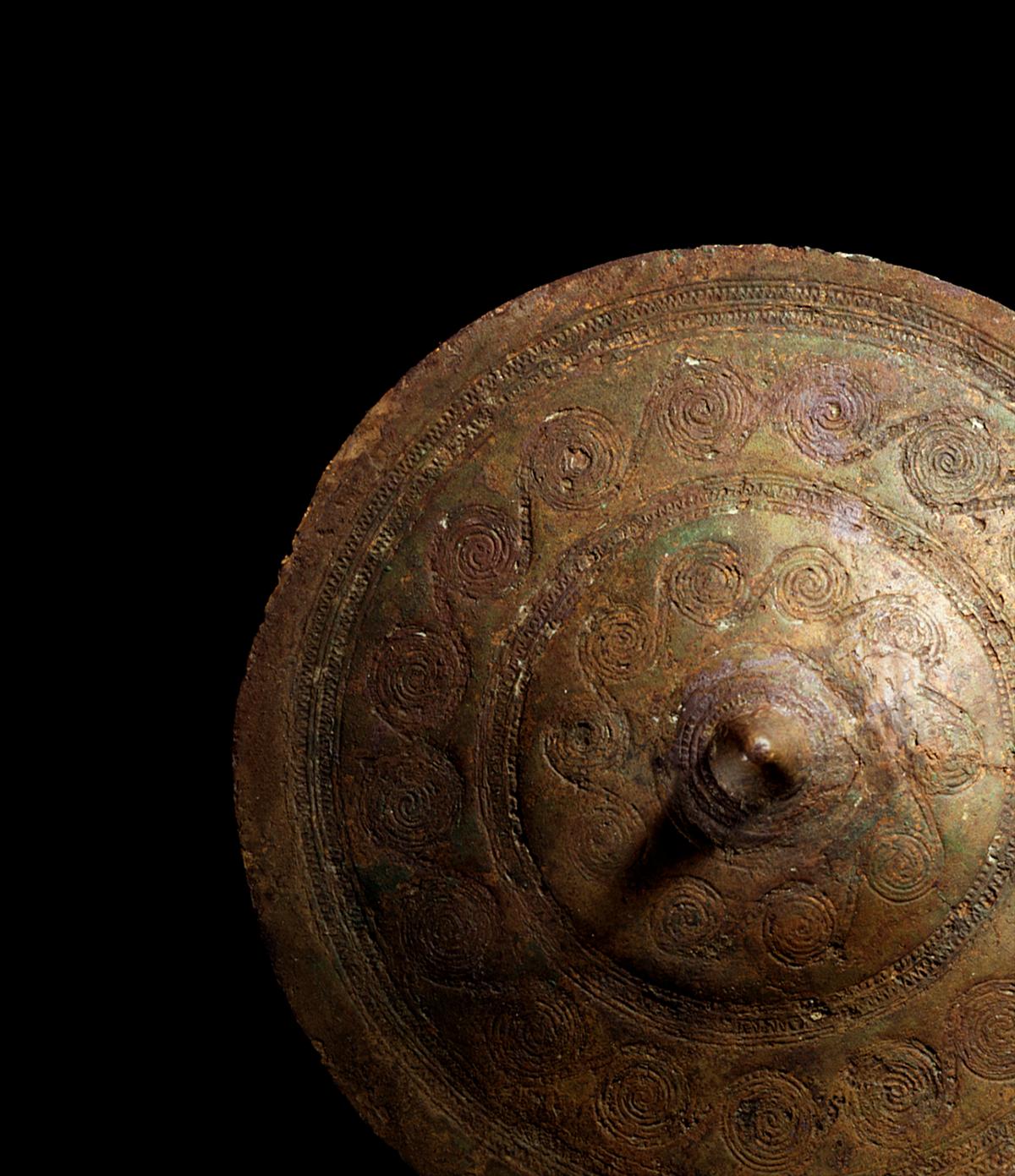Ten rozbor izotopů stroncia je velmi zajímavý a podává ještě více zajímavější informace. Na podzim jsem byl na přednášce ,, Z Little Bighornu do Železných hor – archeologie konfliktů‘‘ v Pardubicích a tuhle zkoušku dělali u vojáků z hromadného hrobu z období třicetileté války. Ten hrob, odkud pocházejí oni lvíčci, bratránci těch Chrudimských. A tak tam byli vojáci ze Skotska, Španělska, Itálie, Dánska a myslím i z Litvy. Slušná směsice.
https://ibb.co/N2WNgt6
Avatar of Egtvedpigen, or: the Bronze Age Girl Speaks
Categories: Nálezy nejenom s detektorem ve Skandinávii
In 1921, the grave of a young Bronze Age woman was discovered near the village of Egtved in southeast Denmark. It was found when a farmer dug through her coffin with a shovel while digging a burial mound. The coffin with the remains was later stored in a museum and now, using the latest 3D virtualisation techniques, has been 'brought to life' to bring the past as close as possible to the visitors it speaks to, waves to and greets.
The remains of the so-called "Egtved Girl" were placed in a hollowed-out oak trunk, which has been dendrochronologically dated to 1 370 BC. The cavity was lined with cowhide and furnished with funerary objects, including a birch jar with equipment or an urn with the ashes of a child of about five years old. The girl wore a fine wool tunic, a corded skirt and a belt with a large bronze circular buckle.
The coffin, the fine woollen clothes and the cowhide hair were beautifully preserved, but from the very "Egtved girl" all that remained was her blonde hair, some teeth, nails, traces of skin and brain matter. She also left behind the imprint of her body on the cowhide. Using strontium isotope analysis, experts determined that she was neither born nor raised in Denmark. She probably came from the Black Forest region of southern Germany and lived in Denmark for only about a year before her death.
From the remains and the imprint of the body, scientists were able to determine that she was between 16 and 18 years old. She had shoulder-length hair, worn front teeth and was about 160 to 165 centimetres tall. She was buried in the cairn in the summer of 1370 BC as a person of importance. Based on all the information gathered, researchers from the National Museum, in collaboration with 3D artists, created a virtual avatar of her
This is not a reconstruction of the face from the skull, which unfortunately has not been preserved. The skin tone, facial features and eye colour are only estimates. Only about 30-40% of the virtualization is based on scientific information: "We know she was buried on a summer day, so we gave her a light tan. Analyses of her hair suggest that the last part of her life was difficult. She was sick or hungry for a period of time. That's why she has faint red lines under her eyes," says lead research professor Karin Margarita Frei.
In addition, she was given a number of items and gifts for her grave, which also form pieces in the puzzle of her life and fate. One of the grave goods, for example, is a small comb. They groomed their hair, men shaved with small knives. They weren't some savages who ran around with mud on their heads and couldn't figure out how to wash themselves. That's why Egtvedpigen is also well groomed," said lead researcher Flemming Kaul.
Together with developers and 3D artists, the National Museum researchers brought her to life as a digital human with a voice and vivid facial expressions. Her face is built using the latest technology, which is usually used in computer games such as Fortnite and The Witcher or in films such as Dune, Star Wars and The Mandalorian. This technology has not been used in the museum before. Now it helps to bring the past alive and closer to a wider audience.
"The Egtved Girl is important to our cultural heritage, so it's crucial that we continually raise awareness. Many visitors walk past her coffin and doubt whether she is actually lying there because the bones have not survived. But now she's drawing attention to herself. At the same time, our desire is to create a stronger connection with the past, and this is best achieved if you can identify with the person from the past. Now you can come face to face with the Egtved girl," added exhibition editor Mette Boritz.
Video
Roman Němec
Sources: natmus.dk, thehistoryblog.com

The Birch Jar

belt buckle

oak log coffin and equipment

Egtvedpigens
The article is included in categories:
- Archive of articles > Archaeology > Finds and rescue research abroad > Nálezy nejenom s detektorem ve Skandinávii
Post
Ahoj...tady dokument- https://uloz.to/file/W1UmJ3IAOP6G/divka-z-egtvedu-2017-sdtv-x264-pip-mp4
Docela pěkná roštěnka, navíc se česala..... 





Jinak krásně udělaný 👍😊
Zajimavy clanek. Super, ze rakev nebyla zemedelcem uplne znicena a mohli ji nasledne vytahnout vcetne obsahu.
Male jazykove okenko k nazvu. Slovo "pigen" znamena v danstine divka.
Kam se poděla její kostra? Obvykle jsou to právě kosti, které vydrží nejdéle. To mi přijde podivné, až bizarní. 
Parádní článek! 
Chybejici kosti jsou caste napriklad u nalezu tel z bazin. Duvodem je vlhkost, nedostatek kysliku a taky kyselost prostredi. Prave kysele prostredi zpusobuje chemickou reakci v kostech. Fosoforecnan vapenaty a celkove vapnik v kostech a zubech se vlivem kyselosti rozpusti. Naopak organicky material jako vlasy, kuze, vnitrni organy (pripadne organicke milodary) pomaha toto prostredi uchovat. Kuze akorat ztmavne a vlasy zcervenaji. Zajimave v tomto pripade spis je, ze se zachovaly jeste nejake zuby, zatimco kuze s organy az tolik ne. Asi ten proces v tomto pripade nebyl uplne dokonaly.











